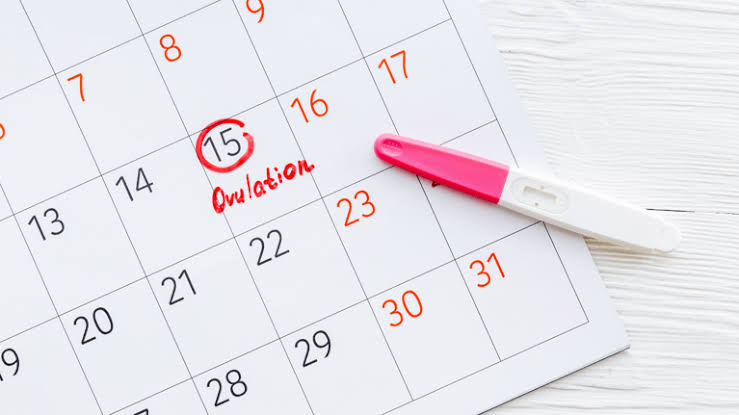As a woman, understanding our menstrual cycle and ovulation is crucial whether we’re trying to conceive or avoid pregnancy. In this guide, I will delve into how to calculate ovulation, the methods and tools for calculating ovulation, debunk common misconceptions, and provide tips for accurate ovulation calculation.
Understanding Ovulation
Ovulation is a critical phase in a woman’s menstrual cycle, where a mature egg is released from the ovary and is ready for fertilization by sperm. This typically occurs around the midpoint of the menstrual cycle, which is approximately 14 days before the start of the next period. Understanding the signs and symptoms of ovulation is essential for women who are actively trying to conceive.
The menstrual cycle is divided into two main phases: the follicular phase and the luteal phase. The follicular phase begins on the first day of menstruation and ends with ovulation, while the luteal phase starts after ovulation and continues until the start of the next period. Ovulation is a pivotal event during the menstrual cycle, and accurately calculating its timing is crucial for those trying to get pregnant or avoid pregnancy.
Ovulation is influenced by various factors, including hormonal changes, stress levels, and overall health. It’s important to recognize that every woman’s cycle is unique, and factors such as stress, illness, or changes in routine can affect the regularity of ovulation.
How to Calculate Ovulation

There are several methods to calculate ovulation, each with its own advantages and limitations. These methods include tracking basal body temperature, using ovulation predictor kits, monitoring cervical mucus changes, and calculating ovulation through menstrual cycle tracking.
Tracking Ovulation through Basal Body Temperature
Basal body temperature (BBT) tracking involves taking your temperature every morning before getting out of bed. This method relies on the fact that a woman’s basal body temperature slightly increases after ovulation due to the release of progesterone. By recording your daily temperatures and observing the pattern of temperature shifts, you can identify the time of ovulation.
It’s important to use a special basal body thermometer for accurate readings, as regular thermometers may not detect the subtle temperature changes. To effectively track ovulation using BBT, consistency is key. This method requires commitment and patience, as it may take a few cycles to recognize a clear pattern in temperature changes.
Using Ovulation Predictor Kits
Ovulation predictor kits (OPKs) are convenient tools that detect the surge of luteinizing hormone (LH) in your urine, which typically occurs 24-36 hours before ovulation. These kits are similar to home pregnancy tests and are readily available at pharmacies or online. To use an OPK, you simply collect a urine sample and follow the instructions on the kit to determine the presence of the LH surge.
OPKs are particularly useful for women with irregular menstrual cycles or those who want to pinpoint the exact timing of ovulation. It’s important to note that certain medications or medical conditions can affect the accuracy of OPK results, so it’s advisable to consult a healthcare professional if you have concerns about using these kits.
Monitoring Cervical Mucus Changes
The consistency and appearance of cervical mucus can provide valuable insights into the ovulation process. As ovulation approaches, cervical mucus becomes clear, slippery, and stretchy, resembling the texture of raw egg whites. This fertile cervical mucus facilitates the movement of sperm and indicates that ovulation is imminent.
By regularly observing and charting changes in cervical mucus throughout the menstrual cycle, women can identify their fertile window and optimize their chances of conception. It’s important to note that factors such as arousal, hydration, and sexual activity can also affect the appearance of cervical mucus, so it’s essential to track these changes consistently.
Calculating Ovulation Using Menstrual Cycle Tracking
Menstrual cycle tracking involves recording the start and end dates of your menstrual periods to identify patterns and predict the timing of ovulation. This method is particularly beneficial for women with regular cycles, as it allows them to estimate the approximate time of ovulation based on their cycle length.
There are various smartphone apps and online tools available that can help women track their menstrual cycles and predict ovulation. These apps often incorporate features such as period tracking, ovulation prediction, and fertility insights, making it easier for women to monitor their reproductive health and plan accordingly.
Apps and Tools for Ovulation Tracking
In the digital age, there is an abundance of apps and tools designed to assist women in tracking their ovulation and fertility. These apps offer features such as menstrual cycle tracking, ovulation prediction, fertility awareness education, and personalized insights based on individual data. They can be valuable resources for women who want to take a proactive approach to understanding their reproductive health.
Some popular ovulation tracking apps include Clue, Flo, Ovia Fertility, and Kindara. These apps utilize advanced algorithms and data analytics to provide users with accurate predictions, personalized recommendations, and a wealth of educational resources. Many of these apps also offer the option to connect with a community of users for support and advice.
It’s important to choose an app or tool that aligns with your specific needs and preferences. Whether you prioritize user-friendly interface, data privacy, or integration with other health apps, there is a wide range of options to explore. When using these apps, it’s essential to input data consistently and truthfully to ensure the accuracy of the predictions and insights provided.
Tips for Accurate Ovulation Calculation
When it comes to calculating ovulation, precision and consistency are key. Here are some tips to enhance the accuracy of ovulation calculation:
- Chart Your Basal Body Temperature: Establish a routine of taking your temperature at the same time every morning and record the readings diligently. This will help you identify patterns and changes in your basal body temperature.
- Combine Methods for Confirmation: Consider using multiple ovulation tracking methods concurrently, such as basal body temperature tracking, ovulation predictor kits, and cervical mucus monitoring, to cross-check and confirm the timing of ovulation.
- Be Mindful of Other Influencing Factors: Recognize that factors such as illness, medication, stress, and travel can impact the regularity of ovulation. By staying mindful of these influences, you can interpret your ovulation signs more accurately.
- Seek Professional Guidance if Needed: If you have irregular cycles, underlying health conditions, or concerns about your fertility, don’t hesitate to consult a healthcare professional. They can offer personalized guidance and recommendations based on your individual circumstances.
By following these tips and staying attuned to your body’s signals, you can improve the precision of your ovulation calculations and optimize your chances of achieving your reproductive goals.
Understanding the Signs of Ovulation
Recognizing the signs and symptoms of ovulation is instrumental in accurately identifying the fertile window. Some common indicators of ovulation include:
- Changes in Basal Body Temperature: A slight increase in basal body temperature following ovulation.
- Cervical Mucus Changes: Clear, slippery cervical mucus resembling raw egg whites.
- Ovulation Pain: Some women experience mild abdominal discomfort or ovulation pain, known as mittelschmerz.
- Increased Libido: Ovulation can be accompanied by a surge in sexual desire or heightened arousal.
- Positive Ovulation Predictor Kit: A positive result on an ovulation predictor kit, indicating the presence of the luteinizing hormone surge.
By paying attention to these signs and symptoms, women can become more attuned to their fertility and make informed decisions regarding conception or contraception.
Common Misconceptions About Ovulation
Despite the prevalence of information about ovulation, there are several misconceptions that persist. It’s important to debunk these myths to promote a better understanding of ovulation and reproductive health. Some common misconceptions about ovulation include:
- Ovulation Only Occurs on Day 14: Ovulation timing can vary widely among women and is influenced by individual cycle lengths and hormonal patterns.
- You Can’t Get Pregnant Outside of Ovulation: Sperm can survive in the female reproductive tract for several days, increasing the likelihood of pregnancy if intercourse occurs before ovulation.
- Ovulation Always Causes Pain: While some women experience ovulation pain, others may not feel any discomfort during ovulation.
- Ovulation is Always Accompanied by Obvious Symptoms: Not all women experience prominent physical symptoms during ovulation, making it essential to rely on multiple methods for tracking.
By dispelling these misconceptions and promoting accurate information about ovulation, women can make more informed decisions regarding their reproductive health and fertility goals.
In conclusion, understanding how to calculate ovulation is fundamental for women who are navigating the journey of conception, fertility awareness, or birth control. By exploring various methods such as basal body temperature tracking, ovulation predictor kits, cervical mucus monitoring, and menstrual cycle tracking, women can gain valuable insights into their reproductive cycles and make informed decisions. By leveraging apps and tools for ovulation tracking, staying mindful of influencing factors, and recognizing the signs of ovulation, women can enhance the accuracy of their ovulation calculations and empower themselves with knowledge. Debunking misconceptions about ovulation further contributes to promoting a comprehensive understanding of reproductive health. Whether embarking on the path of pregnancy or prioritizing contraception, a thorough understanding of ovulation is an indispensable asset for women’s health and well-being.
If you found this guide on how to calculate ovulation helpful, consider sharing it with other women who can benefit from a deeper understanding of ovulation and its significance in reproductive health.






